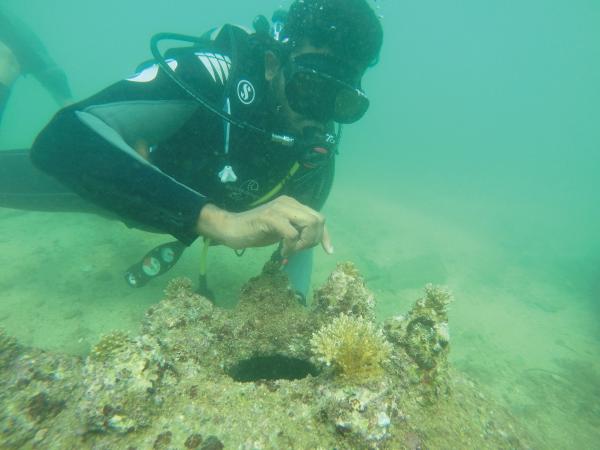
Image credit: Rotaract club of University of Moratuwa
The beautiful coral reefs along Sri Lanka’s coastlines have long attracted tourists. But the coral reefs, once filled with brilliantly colored fish and other species, have been dying. Coral bleaching due to warmer ocean temperatures, along with excessive fishing, sand mining, and polluted waters, has heavily damaged these living systems.
The Rotaract Club of University of Moratuwa recently completed a three-year project to replenish the corals. Project Zooxanthellae — named for the type of algae that lives on the surface of corals and nourishes them — involved Sri Lankan Navy divers placing 10 steel-framed structures underwater several hundred yards from shore. The divers then attached about 60 finger-size branches of live coral to each of the six-sided, 5-foot-high frames, which look like industrial jungle gyms. The coral polyps secrete the protective exoskeletal material that forms a reef. In four to five years, new reefs will have formed around the frames. The frames will eventually rust away, leaving a healthy reef.
“We wanted to do something to save the coral and help tourism,” says Rotaractor Paveen Perera. “This project will help people in those coastal areas who earn a living through the tourism industry.”
The project came about in 2016 after Sahan Jayawardana, the club’s environment director at the time, heard a lecture on coral reefs by Nalin Rathnayake, an oceanography expert from the Department of Earth Resources Engineering at the University of Moratuwa. A similar reef seeding project had been done successfully in the Maldives.
The location of the future reef was determined by the National Aquatic Resources Research & Development Agency, which conducted a survey looking for optimal growing conditions. The structures were designed and made by Siam City Cement (Lanka) Ltd., in collaboration with Rathnayake.
The coral pieces came from a nearby site, and it took about a year to get permission to harvest them, explains club member Natasha Kularatne, who helped oversee the project. Over the course of a week, the structures were placed in the waters off Jungle Beach, Rumassala, a major tourist area, and the corals were attached.
So far, the project has been successful, and this year the club was recognized with a Rotaract Outstanding Project Award for the South Asia region. “The Navy went on a dive and took photos, and it shows growth,” says Perera. “They are doing well.”
— ANNE STEIN
• This story originally appeared in the September 2019 issue of The Rotarian magazine.